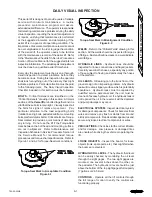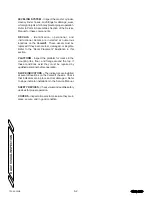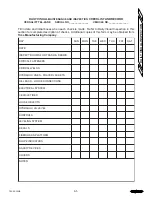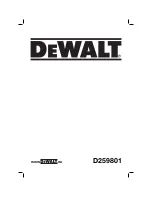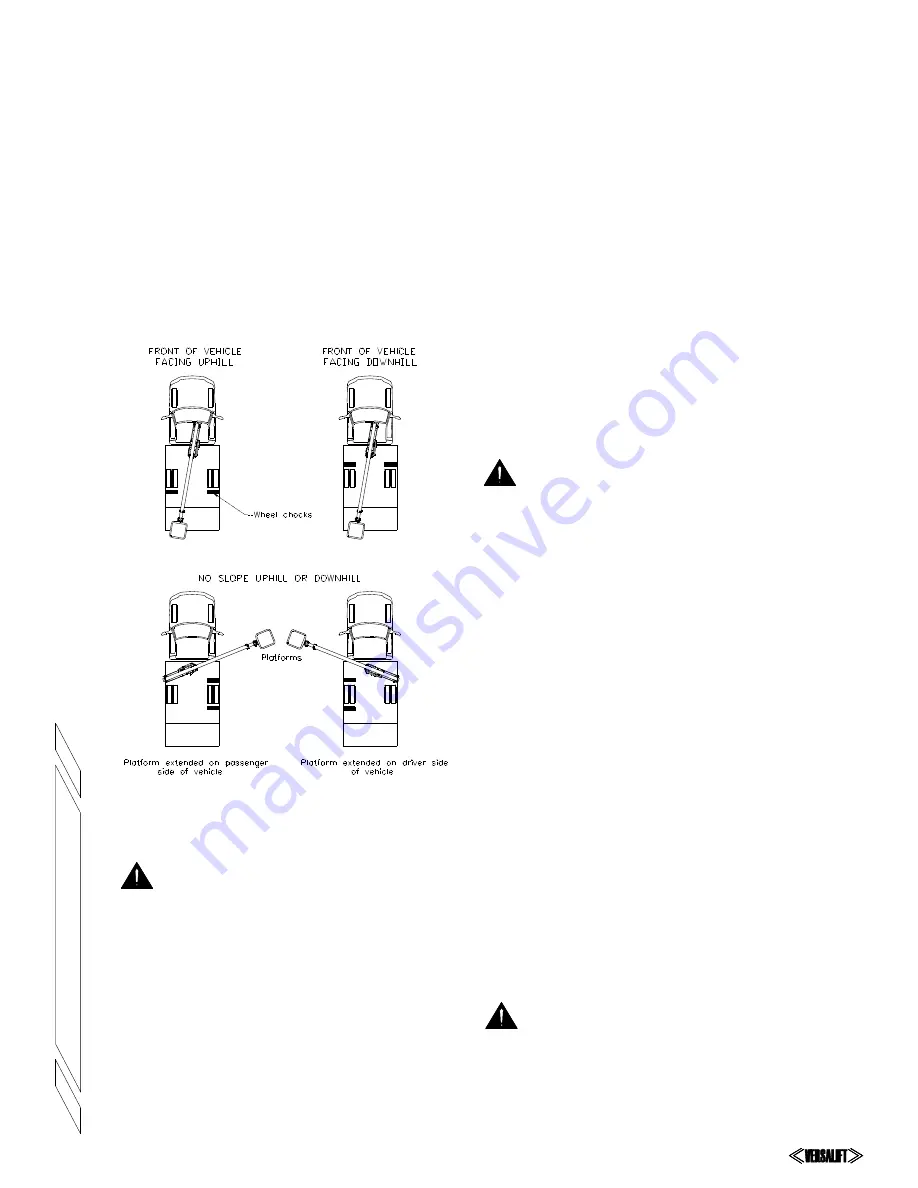
4-2
TEL-29-N/NE
OPERA
TION
AERIAL LIFT OPERATIONS
This section emphasizes overall operating practices
for aerial lift operations. This information is presented
in the order of probable use while operating first from
the ground, then from the platform and close to
energized conductors.
Start Up Procedures When Operating From the
Ground:
Position the truck as described in this section.
In extremely cold weather allow the aerial lift to idle a
few minutes before engaging a load. Further
consideration of cold weather operation is addressed
in Service Procedures Section of Service Manual,
“Hydraulic Oil Recommendations”.
CAUTION
:
IF AN AERIAL DEVICE HAS
SET IDLE FOR AN EXTENDED LENGTH OF TIME
(I.E. OVERNIGHT) OPERATE IT FROM THE
LOWER CONTROLS THROUGH ITS FULL
RANGE OF MOTION SEVERAL TIMES BEFORE
AN OPERATOR ENTERS THE PLATFORM.
This procedure confirms that the lift is operating
properly and purges any air that may have become
entrapped in the hydraulic system. Select lower
control operation with the lower control selector
switch. Refer to the diagrams of lower controls in
this section. Always disengage the boom tie down
before initiating any lift movements.
If there is any kind of malfunction during this test
run, shut down the unit immediately. Do not operate
the lift again until the problem has been corrected by
the service department. Operate each lift function
from the lower controls by moving the spring-loaded
control switch in the desired direction, until motion
begins. To terminate a lift movement allow the spring-
loaded control switch to return to the centered or
neutral position. The standard rotation limit is
activated electrically. The boom raise, lower, extend
and retract movements, however, are mechanically
limited.
DANGER:
NEVER REVERSE OR
STOP THE DIRECTION OF LIFT TRAVEL
SUDDENLY AND AVOID REACHING THE END OF
BOOM RANGE AT EXCESSIVE SPEEDS.
STRUCTURAL DAMAGE OR INSTABILITY MAY
RESULT CAUSING DEATH OR SERIOUS INJURY.
mph (48 km/hr) or there is a threat of an electrical
storm.
2.
After leaving the cab chock the wheels. This is
extremely important because the brake
systems on some larger trucks have a critical
weakness. They may be engaged by locking
the drive shaft behind the transmission. If the
weight is reduced from one of the rear wheels,
by the position of the lift, the truck differential
can allow the truck to roll. Refer to the diagram
below for proper way of chocking the wheels.
Wheel Chocking Diagram
Figure 4.1
DANGER:
NEVER OPERATE THE
LIFT WITHOUT SETTING THE PARKING BRAKE
AND CHOCKING THE WHEELS. A ROLLING
TRUCK MAY CAUSE AN ACCIDENT RESULTING
IN DEATH OR SERIOUS INJURY.
3.
Set up adequate cones or barricades to mark
the boundaries of the work site and alert
pedestrians and motorists. Never work outside
the boundaries.
Summary of Contents for TEL-29-N
Page 2: ......
Page 4: ......
Page 6: ......
Page 8: ...1 2 TEL 29 N NE INTRODUCTION Figure 1 1 Model TEL 29 N NE Nomenclature ...
Page 11: ...2 3 TEL 29 N NE RESPONSIBILITIES SAFETY ...
Page 20: ...3 6 TEL 29 N NE SPECIFICATIONS ...
Page 22: ...3 8 TEL 29 N NE SPECIFICATIONS ...
Page 24: ...3 10 TEL 29 N NE SPECIFICATIONS ...
Page 25: ...3 11 TEL 29 N NE SPECIFICATIONS ...
Page 26: ......
Page 34: ......
Page 38: ......
Page 42: ...6 4 TEL 29 N NE DAILY VISUAL INSPECTION ...
Page 44: ...6 6 TEL 29 N NE DAILY VISUAL INSPECTION ...


























